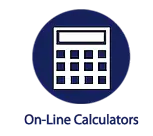Quick Links
Excellent Temperature Stability
Alnico magnets were invented in the 1920s. Composed of aluminum, nickel and cobalt alloys, alnico magnets are used today in high temperature applications, in applications requiring low coercivities (the ability to demagnetize and re-magnetize easily), or in mass produced instruments and legacy applications where the material has been designed.
On a cost per pound basis, this material is comparable to the cost of neodymium magnets. However, in most applications, alnico is much less powerful than Neodymium magnets. Alnico magnets are manufactured through either casting or sintering. Cast magnets can be made in fairly complex shapes such as a 4-pole round horseshoe magnet (see image below).
Integrated Magnetics designs and builds custom alnico magnets and technical magnetic assemblies, manufactured to meet your specialty requirements. Send us a request for quote or contact us today for more information about standard & custom alnico magnets. Large inventory of alnico magnets are also available for on-line purchase at MagnetShop.com.
Key Benefits of Alnico Magnet Material
- Excellent temperature stability up to 1,000° F; 90% of room temperature magnetization is retained up to this temperature.
- High residual induction: alnico magnets can produce powerful fields in certain configurations.
- Alnico material does not corrode.
- Cast alnico magnets can be produced in relatively complex shapes.
- Tooling for cast magnets is relatively low, since sand molds are generally used for the casting process.
Key Challenges of Alnico Magnet Material
- Alnico materials have low coercivities, so they are easily demagnetized.
- They are relatively costly, as they contain both nickel and cobalt.
- Cast alnicos often have casting pores and voids within them, which can be problematic from an aesthetic point of view, and because large voids may lower expected magnetic flux.
Quick Facts about Alnico Magnet Material
- Density: 0.265 lbs. per cubic inch
- Saturation magnetizing field required: about 5kOe
- Manufacturing methods: casting (most common), or sintering.
- Available Shapes: blocks, bars, discs, rings, horseshoes, etc.
- Available Grades: from about 0105 to 0519. (First 2 digits represent BHmax, and second two digits represent Intrinsic Coercivity, or Hci).
- Sizes: off tool, very large alnico magnets can be cast (horseshoe magnets weighing 500 lbs.); smaller magnets are usually sintered (sintered discs, 1/16" in diameter).
Caution!
Special care should be taken to ensure that these magnets are not subject to adverse repelling fields, since these could partially de-magnetize the magnets. If alnicos are partially de-magnetized however, they can be easily re-magnetized.









